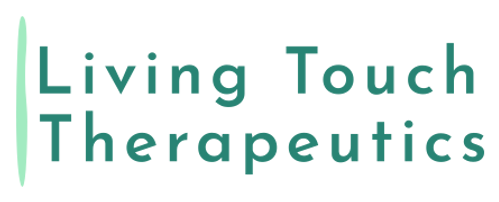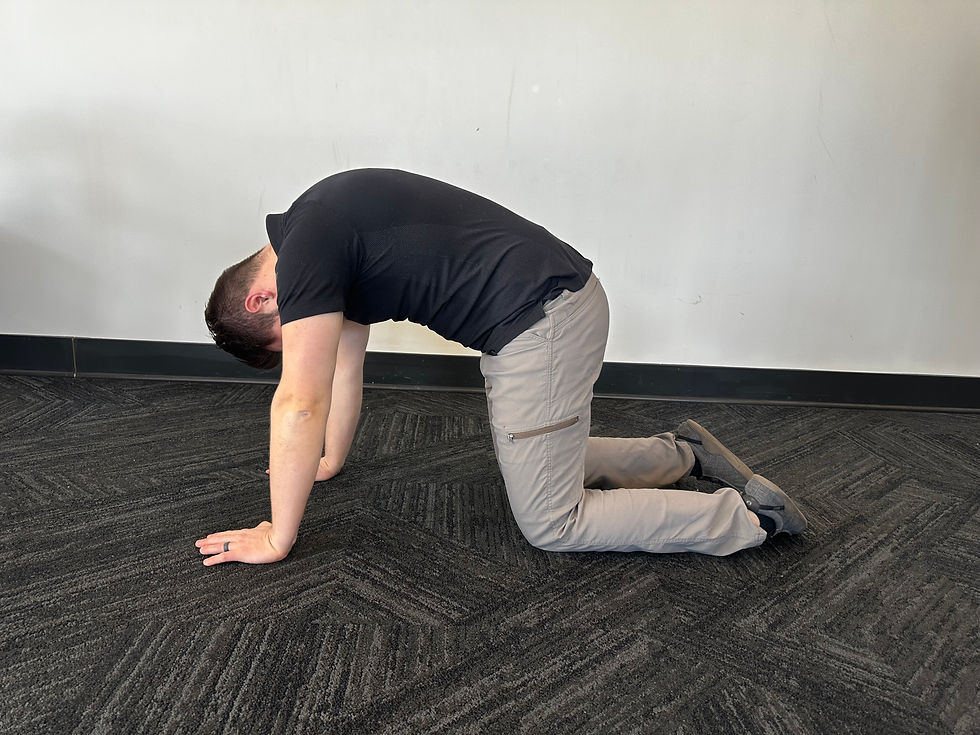Low Back Cat-Cow Stretch
- Benjamin Mishleau
- Feb 4
- 2 min read
Updated: Feb 20
The Cat-Cow Stretch originates from yoga, where it is known as Marjaryasana-Bitilasana and has been practiced for centuries to promote spinal mobility, breath control, and overall flexibility. Over time, physical therapists and movement specialists adapted the traditional pose, emphasizing its benefits for lower back health by focusing on lumbar spinal articulation. This modified version, often called the Low Back Cat-Cow Stretch, became widely used in rehabilitation, mobility training, and corrective exercise programs to help alleviate lower back stiffness, improve pelvic control, and support spinal alignment. Today, it is a staple in physical therapy, yoga, and fitness routines, valued for its ability to gently mobilize the spine, relieve tension, and improve posture, making it beneficial for people of all activity levels.
Purpose: Improve lumbar spine movement, reduce lower back stiffness, and enhance core control.
Targeted Areas: lumbar spine, core, hip flexors
Instructions:
Begin on all fours in a tabletop position, with hands directly under shoulders and knees under hips.
Slowly round your lower spine, pulling your belly button in. Focus on creating a deep stretch in your lower back.
Reverse the movement by arching your back, tilting your pelvis forward, lifting your chest, and gazing slightly upward.
Move slowly and smoothly between these two positions, focusing on the lower back movement rather than the upper spine.
Perform 8-12 slow reps, inhaling as you move into Cow and exhaling as you move into Cat.
Tips:
Keep the movement slow and controlled to avoid unnecessary strain.
Focus on initiating the movement from the pelvis and lower back rather than just the shoulders or neck.
If you experience discomfort, reduce the range of motion or stop if pain persists.
Who Should Do Low Back Cat-Cows:
Individuals with Lower Back Stiffness or Discomfort – The stretch promotes gentle spinal mobility, helping relieve tension and tightness in the lumbar spine.
People with Sedentary Lifestyles – Those who sit for long hours can benefit from the movement, as it helps counteract poor posture and increase flexibility.
Beginners and Older Adults – The slow, controlled nature of the exercise makes it accessible for those looking to improve spinal mobility safely.
Pregnant Women (with Doctor Approval) – This stretch can help relieve lower back discomfort associated with pregnancy by promoting gentle pelvic movement.
Athletes & Fitness Enthusiasts – Useful as a warm-up or cool-down to maintain spinal health and flexibility.
People with Mild Sciatica or Disc Issues – If approved by a healthcare provider, gentle Cat-Cow movements can help with spinal decompression and pain relief.
Who Shouldn’t Do Low Back Cat-Cows:
Individuals with Acute Back Injuries – Those with herniated discs, fractures, or severe spinal conditions should avoid deep spinal flexion/extension without professional guidance.
People with Severe Sciatica or Nerve Pain – If the movement exacerbates nerve pain or causes sharp discomfort, it should be modified or avoided.
Anyone Experiencing Sharp or Radiating Pain – If pain increases during the movement, it may indicate an underlying issue requiring medical attention.
Those with Wrist or Knee Pain – Since the exercise is performed in a quadruped position, individuals with wrist or knee discomfort should modify it by using a padded surface or performing the stretch seated.









Comments